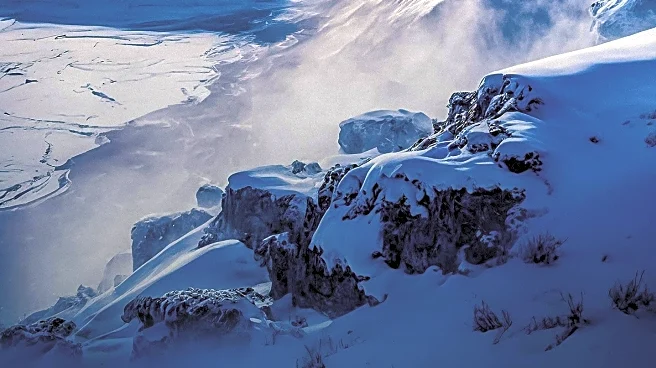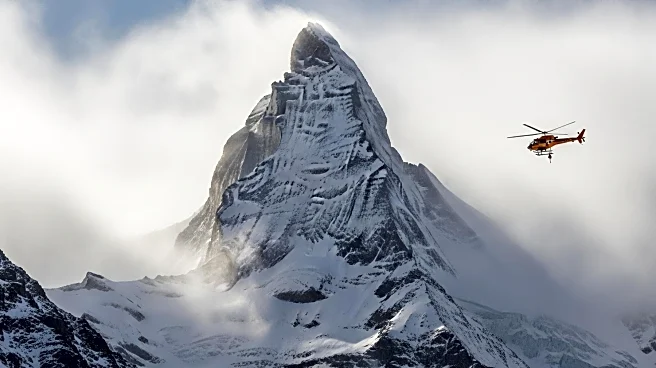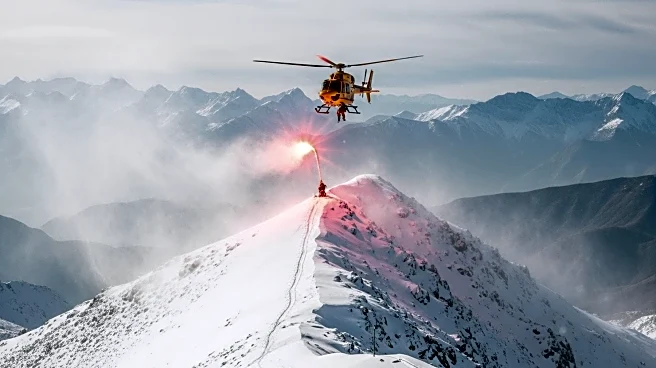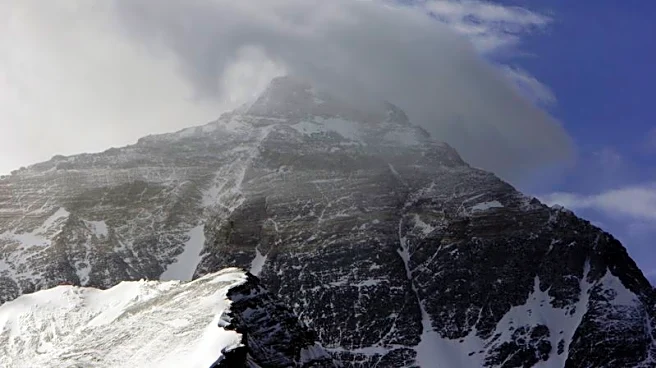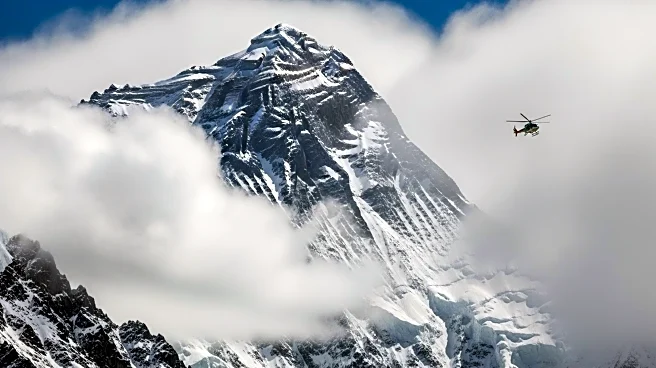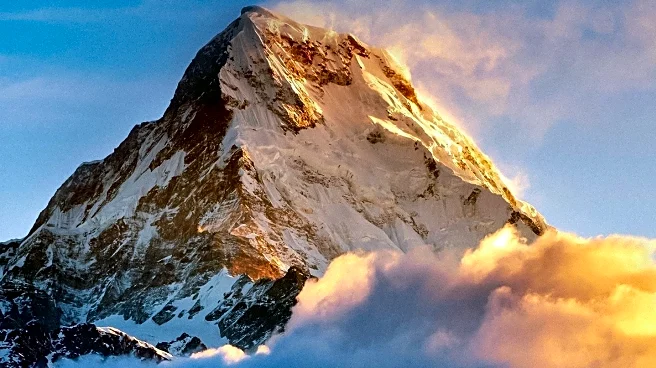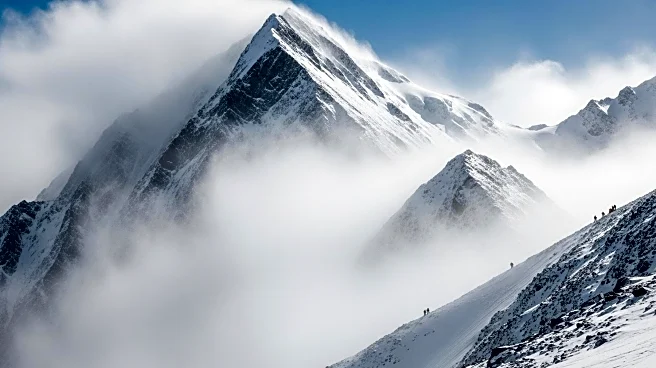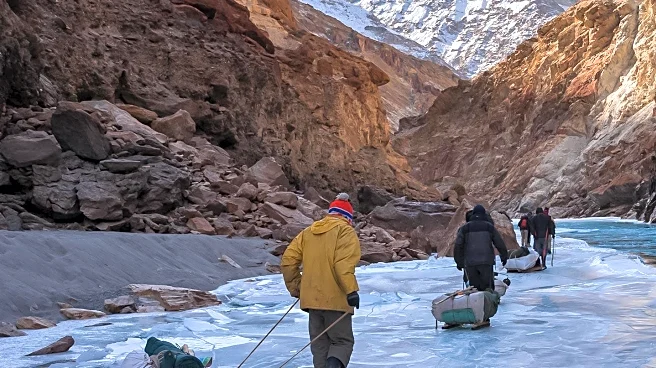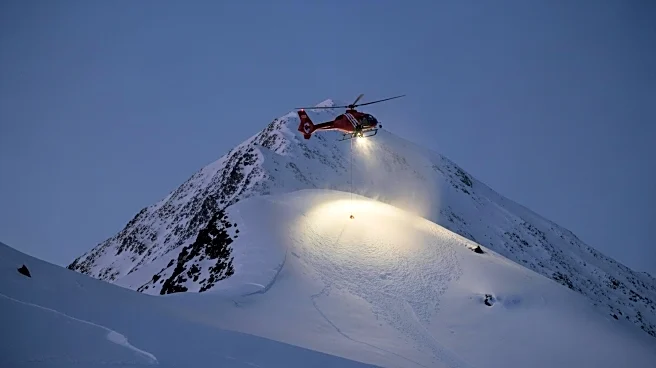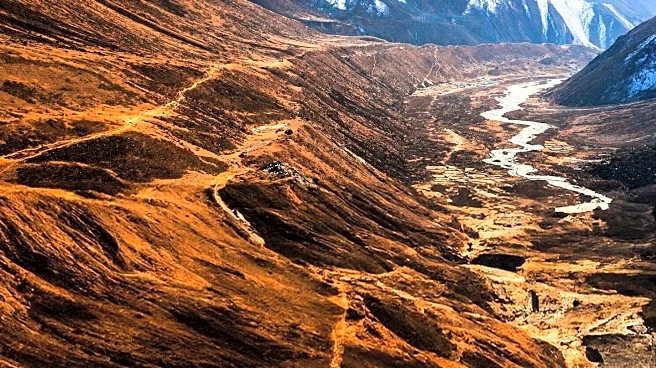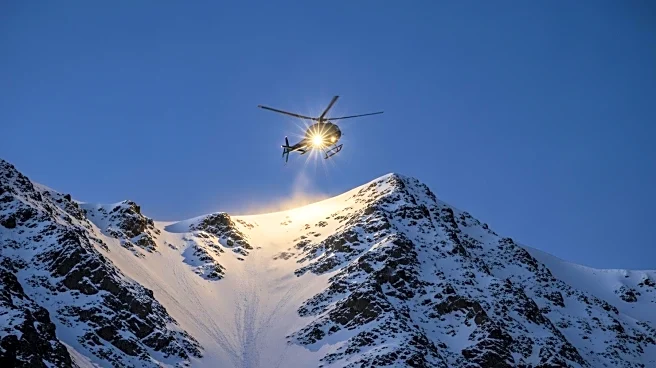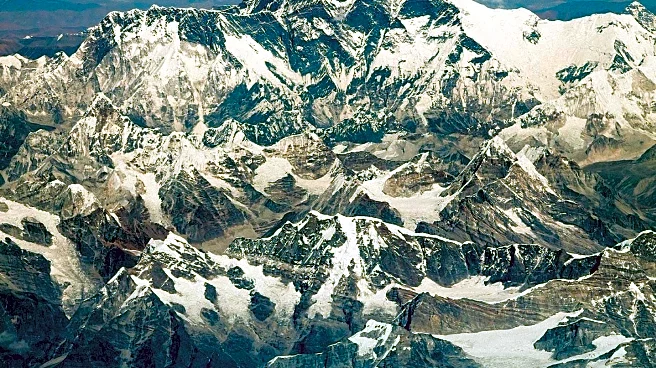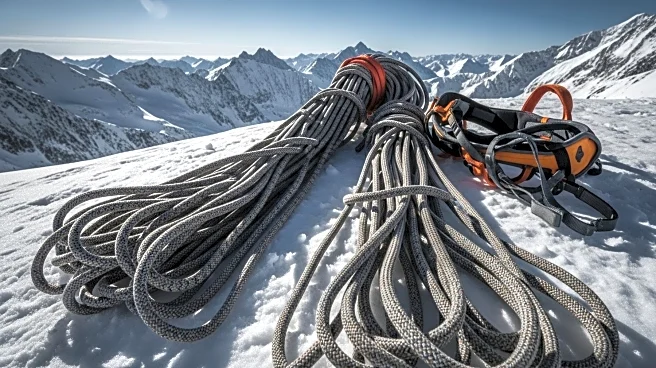What is the story about?
What's Happening?
A severe snowstorm has trapped at least 200 hikers in a valley on Mount Everest, according to Chinese state media CCTV. The storm, which brought heavy snow and rain, has already claimed the life of a 41-year-old male hiker due to hypothermia and acute altitude sickness, as reported by Xinhua. Rescuers have managed to guide approximately 350 hikers to safety, relocating them to the township of Qudang near Everest's eastern slope. The incident occurred during a peak visitation period, coinciding with an eight-day National Day holiday in China. The storm began on October 3 and continued into the following day, trapping around 1,000 people in the remote Karma valley, which leads to Everest's eastern Kangshung face. Efforts are ongoing to clear snow and reach the remaining stranded hikers.
Why It's Important?
The situation on Mount Everest highlights the dangers associated with high-altitude trekking, particularly during adverse weather conditions. The incident underscores the risks of hypothermia and altitude sickness, which can be fatal if not addressed promptly. The event also raises concerns about the preparedness and safety measures in place for climbers and tourists visiting such remote and challenging environments. The economic impact on local tourism, which relies heavily on seasonal visitors, could be significant if safety concerns deter future travelers. Additionally, the logistical challenges of rescue operations in such harsh conditions emphasize the need for improved emergency response strategies in high-altitude regions.
What's Next?
Rescue operations are expected to continue as authorities work to reach the remaining hikers. The incident may prompt a review of safety protocols and emergency preparedness for climbers on Mount Everest. There could be increased scrutiny on the management of tourist influx during peak seasons, potentially leading to stricter regulations or limitations on the number of climbers allowed on the mountain at any given time. The event may also lead to discussions on international cooperation for rescue efforts in the Himalayas, given the mountain's location between Nepal and China's Tibet Autonomous Region.
Beyond the Headlines
The tragedy on Mount Everest may spark broader discussions about the ethical implications of high-altitude tourism and the responsibilities of tour operators in ensuring climber safety. The environmental impact of increased human activity on Everest, including waste management and preservation of the natural landscape, could also come under scrutiny. Long-term, this incident might influence cultural perceptions of adventure tourism and the balance between thrill-seeking and safety.
AI Generated Content
Do you find this article useful?
